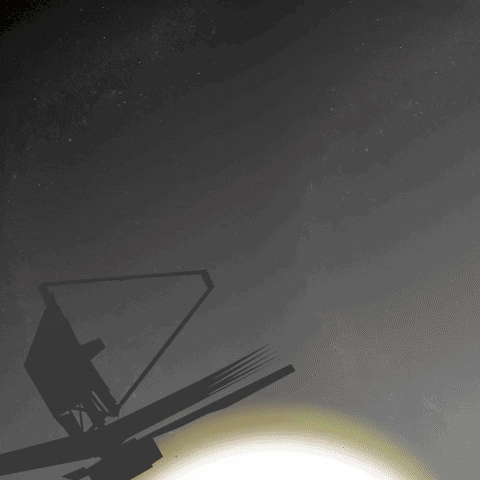The Great Golden Unblinking Eye in the Sky
Throughout history, humanity has looked to the stars with wonder. This curiosity about the universe has inspired astonishing achievements of inventiveness and international collaboration.
Today marks the first anniversary of the inaugural launch of the world’s largest and most powerful space telescope and a new era of astronomy. Taking 25 years to complete from conception to launch, the James Webb Space Telescope is one of the most ambitious feats of astronomical engineering ever achieved.
On December 25 2021, the JWST was launched via rocket from French Guiana to arrive 1 million miles away from Earth (January 2022) at the Lagrange Point L2, an area of space where the gravitational forces between the Sun and Earth are balanced.

On July 11th 2022 the first JWST images were released to the public, duly followed by awe, doubt and conspiracy theories, such that include; the images are computer manipulated (“every star has the same pixel pattern”), that the image and galaxy cluster named ‘SMACS’ is a mockery as evidenced by being ‘SCAMS’ spelt backwards, that the James Webb Space ‘Weapon’ contains parts donated by the US Department of Defense - of which large portions of the specifications have remained censored, and that James Webb himself was a member of the world’s largest secret society the Freemasons.
Everything is true.
The most striking feature of the 7-ton telescope is its 6.5 metre golden mirror consisting of 18 separate hexagonal tiles that resembles a giant shiny honeycomb. This arrangement reduces the amount of dead space between each tile allowing for the largest possible reflective surface. The gold metal collects light at longer wavelengths in the infrared range, 99% rather than 85-95% of regular silver and aluminum mirrors. This allows the JWST a wider field of view than any of its predecessors, enabling it to observe hundreds of objects at once without repositioning. Thus, empowering us to gaze uninterrupted and unobstructed into new depths of the universe. Or conversely, opens humanity’s minds eye unblinkingly into the void.
On its agenda is to peer into black holes, look back in time to the beginnings of the universe and to search for planets able to support life (exoplanets).

However, as we strive to see further and deeper than ever before, do we do so with asking at what cost?
The works of American author H.P. Lovecraft (1890-1937) have emphasised such themes as; humans should not nor could not comprehend knowledge of the cosmos, that such encounters are forbidden, dangerous and sanity breaking. That exposure to such experiences would undermine what humans hold as existential truths and/or erode our presumptions about the nature of reality.
Lovecraftian horror, also known as ‘Cosmic horror’ and the literary philosophy of ‘Cosmicism’ propose that human centric views and the universe are incompatible. That the search for such knowledge inevitably ends in disaster. That in discovery, human perception is permanently distorted, warped into insanity, and on a scale that threatens the whole of humanity.
“If you gaze into the abyss, the abyss gazes into you.” - Nietzsche
